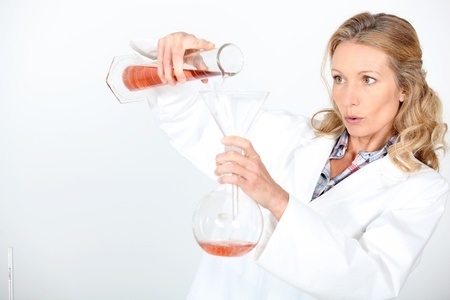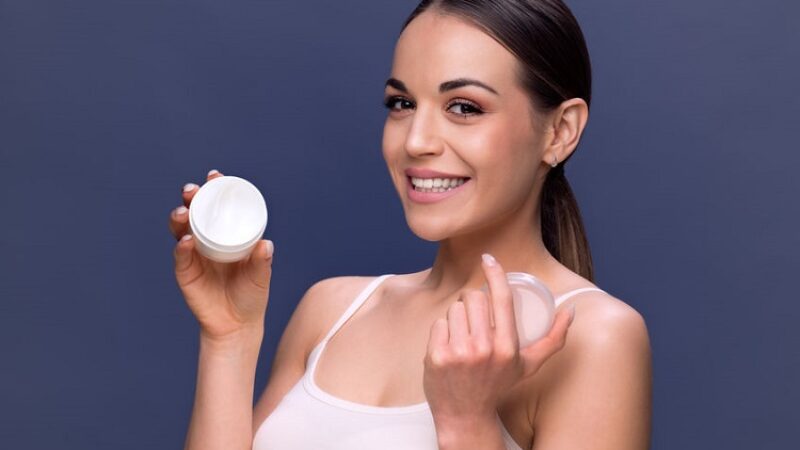In an effort to have the skin of our dreams, we’re always on the lookout for skin care products that promise to erase those wrinkles, dark spots and fine lines. Our bathroom counter is filled with bottles and jars just waiting to perform their miracles every day.
Some are single-purpose, others multi-functioning but are we combining them in a way that maximizes their effectiveness or are we doing more harm than good?
Do you know which ingredients are BFF’s and which are sworn enemies?
1. Retinoids + AHAs = BFF: Occasionally, we hear about how retinoids and alpha hydroxy acids can cancel each other out when used together. So not true. Retinoids are cell communicating agents that have been shown to effectively increase cell turnover, reduce pigmentation, stimulate collagen production and manage acne. AHAs (alpha hydroxy acids) like glycolic acid and lactic acid, are exfoliants, which help remove dead skin cells that can cause the skin to look dull. Exfoliation also helps to increase the absorption of other active ingredients. Using both retinoids and AHA’s simultaneously will improve the skin in different ways. The danger, however, is in potentially overtaxing the skin and causing irritation while not allowing the skin enough time to build up tolerance. Those with sensitive skin may opt to use retinoids and AHA’s on alternate nights, thus reducing the chances of irritation while reaping the benefits of both these proven anti-aging ingredients.
Conversely, retinoids + sun = sworn enemies. When exposed to UV light, retinoids break down, thus losing their efficacy so it’s best to use only at night and to store your products in a dark, dry place. Contrary to what many people believe, it isn’t dangerous to apply retinoids during the day, just ineffective. Look for gentle, effective retinaldehyde in Apothekari A is for Anti-Aging.
2. Vitamin C + vitamin E + ferulic acid = BFF: Vitamin C has long been the darling of the skin care world, working hard to brighten skin tone, fight free radicals, decrease skin discoloration and boost the power of your sunscreen against UVA and UVB damage. But straight from nature, vitamin C is highly unstable. Vitamin E and ferulic acid, however, help to stabilize Vitamin C. When paired, these three BFF’s work synergistically to soothe, heal, moisturize and provide substantial photoprotection against the sun. This terrific trio (and more!) can be found in Apothekari Bespoke Vitamin C Serums.
Like retinoids, vitamin C has its Achilles’ heel: Air. Exposing it to air accelerates the oxidation process. Vitamin C preparations that are not formulated correctly will oxidize (break down) and become ineffective as well as potentially harmful by actually increasing the formation of free radicals which can lead to skin damage. Oxidized vitamin C will take on a yellowish tinge so look for clear solutions or white creams and powders, a good indication that your formulation is stable and therefore, effective and safe.
3. Avobenzone + octocrylene = BFF: Avobenzone is an effective sun filter that blocks UVA-I rays, the ones that age the skin and are responsible for wrinkles, dark spots, saggy skin and some forms of skin cancer. However, avobenzone is vulnerable to breaking down through exposure to the same UV rays that it is meant to protect us from. Pairing avobenzone with octocrylene effectively stabilizes it and allows it to do its job. Bonus: if you see tinosorb in the list of ingredients, be confident in the knowledge that this latest sunscreen favorite also boosts avobenzone’s stability while adding its own strengths, namely the ability to block both short and long UVA rays, an enviable photostability and minimal skin irritation or hormone disruption associated with older sun-filtering agents.
Lastly, we’ve got one combination that makes for bad roommates but good neighbors: Sunscreen and foundation makeup. As the weather warms up, we’ve had customers asking if they can mix their daily sunscreen with some foundation to add tint. While we love DIY, we would not recommend it in this case. By diluting the sunscreen, you’re not getting the full SPF or UVA/UVB coverage that the label indicates, and since most of us tend to be light-handed when it comes to applying the recommended amount, we’re short changing ourselves even more when diluting. The best bet is to find a sunscreen that we enjoy wearing every day that will allow us to layer the makeup on top for a smooth, finished look.





Hi!In what order do I apply in the morning vitamin C,sunscreen,moisturiser?
Hello Ms. Simeonova,
Thank you for your blog question.
The general rule for layering skin care products is to apply products in order from lightest to heaviest consistency. Sunscreens are a special exception. If your sunscreen is chemical based (Mexoryl SX, Mexoryl XL for example), it should go on directly after your Vitamin C serum followed by your moisturizer. This ensures that the active ingredients penetrate adequately to deliver maximum protection. If your sunscreen is physical (and it is the heaviest in consistency), apply it last.
Hope this information helps!
Best,
Sharmani